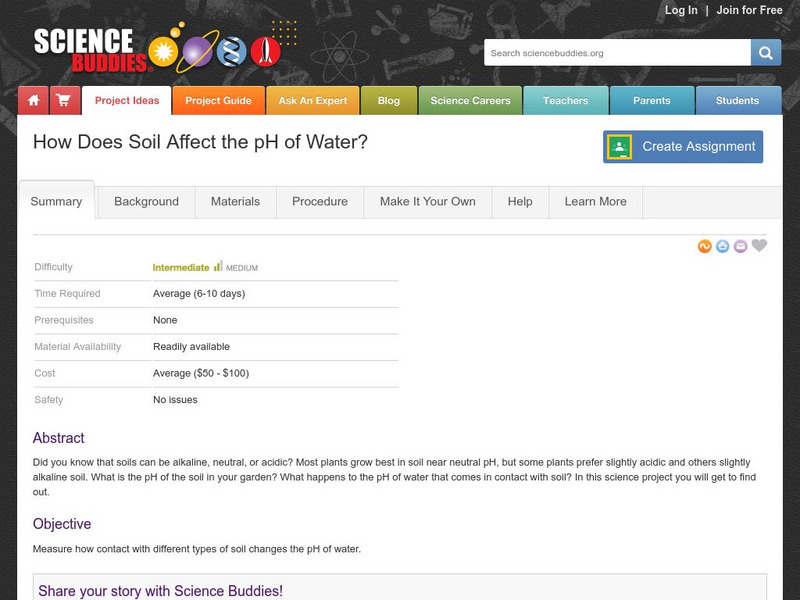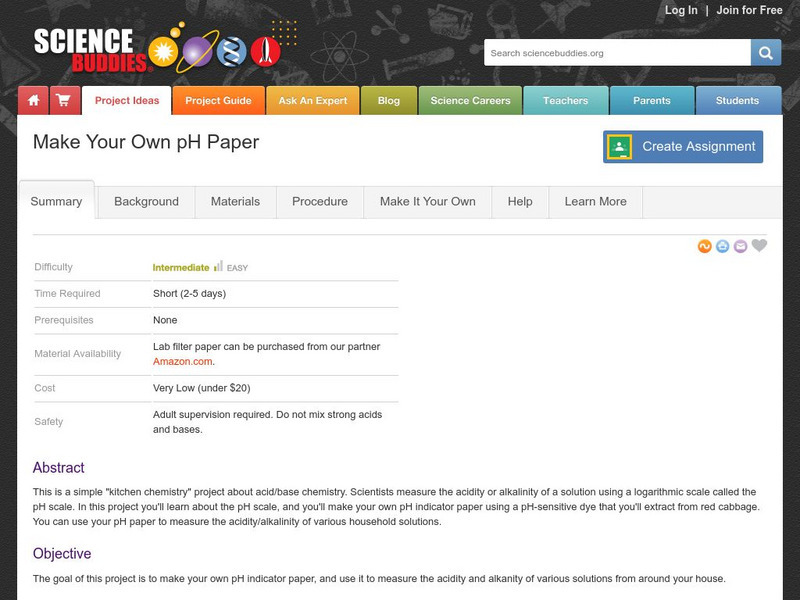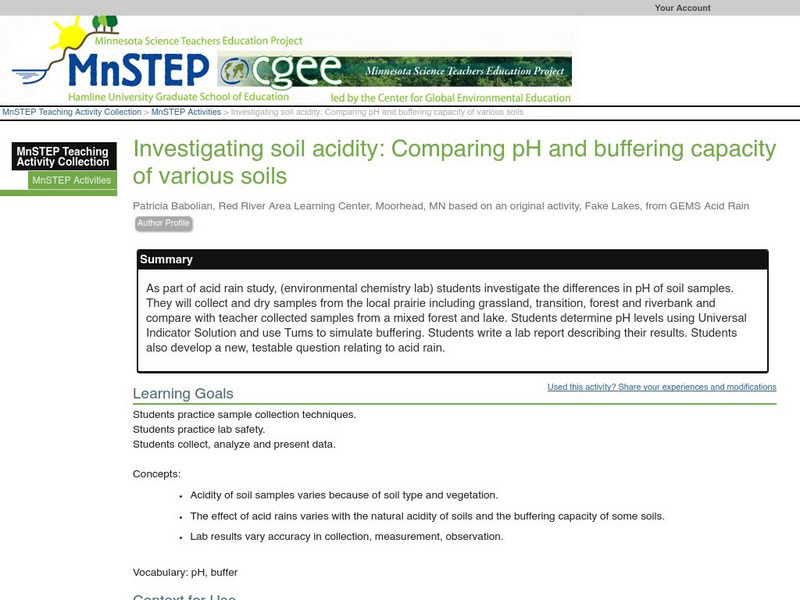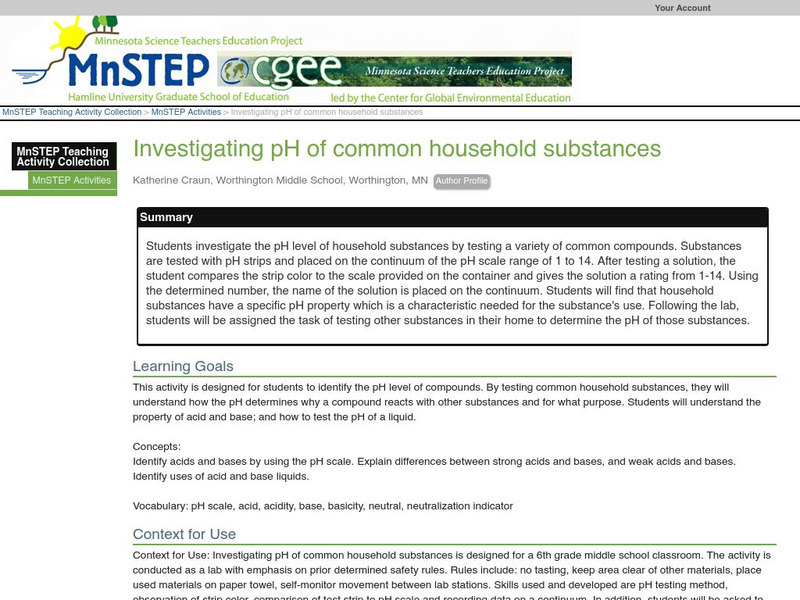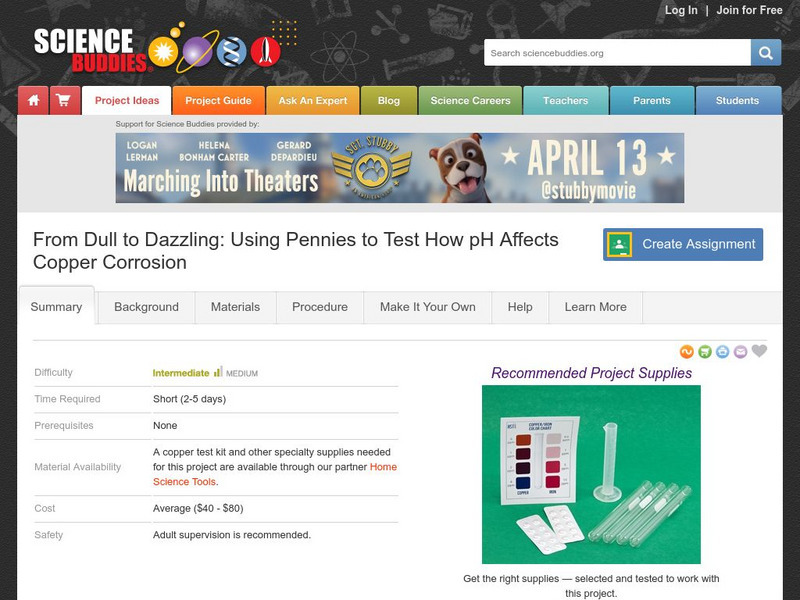Curated OER
Teaching Modeling Water Quality
Students explore the basics of interpreting RUSS temperature and oxygen profile data. They are introduced to the Geographic Information Systems (GIS), particularly with respect to interpreting maps.
Curated OER
Water Quality And pH
Students determine the pH level of water and its effect on aquatic plants and brine shrimp eggs. This is a three part lesson that leads the student through the development of an understanding of water pH. They form a hypothesis and are...
Curated OER
Turbidy and Water
Students use observation skills in assessing the water quality of water samples in this activity and learn that the tastes and preferences of others can be different.
Curated OER
The Physiological Tolerance of Two Species of Protozoans
Students examine the differences in pH tolerance between the two species and relate these differences to their respective niches.
Carnegie Mellon University
Chem Collective: Acid Mine Drainage
Students explore the chemistry behind the causes and effects of acid mine drainage on a modeled river. In this activity, students examine the chemistry of acidic mine runoff and its effects on river water.
City University of New York
P H and Indicators: Interactive Investigation
The story of the dye industry is used to introduce pH and how it is measured and calculated.
American Chemical Society
Inquiry in Action: Color Changes With Acids and Bases
In this lab activity, students will learn how red cabbage can be used as an indicator of an acid or base by looking at its color changes.
Georgia Department of Education
Ga Virtual Learning: Chemistry: Acids, Bases, and Salts
An interactive module where students build upon the discussion of solutions, but specifically concentrate on special types of solutions, acids and bases.
PBS
Pbs Learning Media: Acid Lake
Students will add acidity to a healthy lake to see what happens to plants and animals in this interactive activity adapted from EcoKids.
University of Arizona
The Biology Project: Biochemistry: Acids and Bases Problem Set
How well do you know your acids and bases? This resource will access your understanding and provide tutorials to help you with areas of weakness.
Science Buddies
Science Buddies: Project Ideas: Salt Bridge: Electricity Changes P H
This chemistry science fair project uses a very simple experimental setup - a battery hooked up to two solutions, connected by a salt bridge - to explore some complex chemistry. The Science Buddies project ideas are set up consistently...
Science Buddies
Science Buddies: Cabbage Chemistry
This experiment is for all the kids out there who love boiled cabbage. Even if you don't like cabbage, perhaps you will like this amazing color-changing liquid you can make with cabbage. You'll learn which solutions around your house can...
Science Buddies
Science Buddies: How Does Soil Affect the P H of Water?
Did you know that soils can be alkaline, neutral, or acidic? Most plants grow best in soil near neutral pH, but some plants prefer slightly acidic and others slightly alkaline soil. What is the pH of the soil in your garden? What happens...
Science Buddies
Science Buddies: Make Your Own P H Paper
In this "kitchen chemistry" project about acid/base chemistry, you will measure the acidity or alkalinity of a solution using a logarithmic scale called the pH scale. As you learn about the pH scale, you will have the chance to make your...
Science Buddies
Science Buddies: Measuring the Amount of Acid in Vinegar by Titration
There are many different types of vinegar that you can buy to use around the kitchen for cooking and pickling. The chemical compound that gives vinegar its tart taste and pungent smell is acetic acid. In this experiment you will work to...
Science Education Resource Center at Carleton College
Serc: Investigating Soil Acidity: Comparing P H and Buffering Capacity of Soils
As part of acid rain study, (environmental chemistry lab) students investigate the differences in pH of soil samples. They will collect and dry samples from the local prairie including grassland, transition, forest and riverbank and...
Science Education Resource Center at Carleton College
Serc: Investigating P H of Common Household Substances
Students investigate the pH level of household substances by testing a variety of common compounds. Substances are tested with pH strips and placed on the continuum of the pH scale range of 1 to 14. After testing a solution, the student...
Encyclopedia of Earth
Encyclopedia of Earth: Physics & Chemistry: P H
Explains what pH is and its use in defining what acids and bases are. Also talks about the importance of pH for regulating metabolism in life forms. Includes a chart showing the pH values of common liquids. (Published: July 30, 2010)
American Chemical Society
Middle School Chemistry: Chapter 6: Chemical Change
Twelve interactive chemistry lessons about chemical changes complete with handouts and animations.
American Chemical Society
Middle School Chemistry: P H and Color Change
Young scholars see a demonstration of a color change using universal pH indicator and then change the concentrations of an acid and a base using a universal indicator to test the pH of the resulting solutions. Through an animation, they...
American Chemical Society
Middle School Chemistry: Neutralizing Acids and Bases
Students will use citric acid and sodium carbonate solutions to see that adding a base to an acidic solution makes the solution less acidic. Students will then use a base to help them identify which of two acidic solutions is more...
Vision Learning
Visionlearning: Chemical Relationships: Acids and Bases
An explanation of historical ideas that lead to the current day concepts of acids and bases. The Concept of pH is briefly introduced.
Climate Literacy
Clean: Effects of Increased Co2 in the Air on Seawater and Distilled Water
Students perform an experiment comparing the impacts of CO2 on salt water and on fresh water. In a short demonstration, students examine how distilled water and seawater are affected differently by increasing carbon dioxide in the air.
Science Buddies
Science Buddies: Using Pennies to Test How P H Affects Copper Corrosion
In this science fair project, use a color-based reaction to test how pH affects copper corrosion in pennies.














